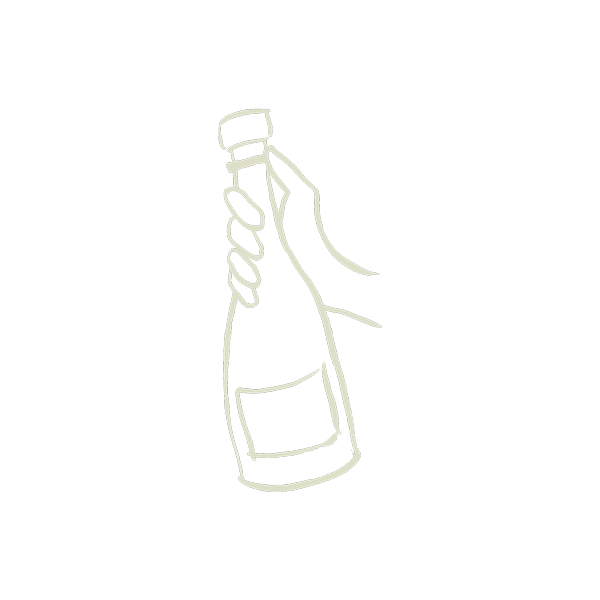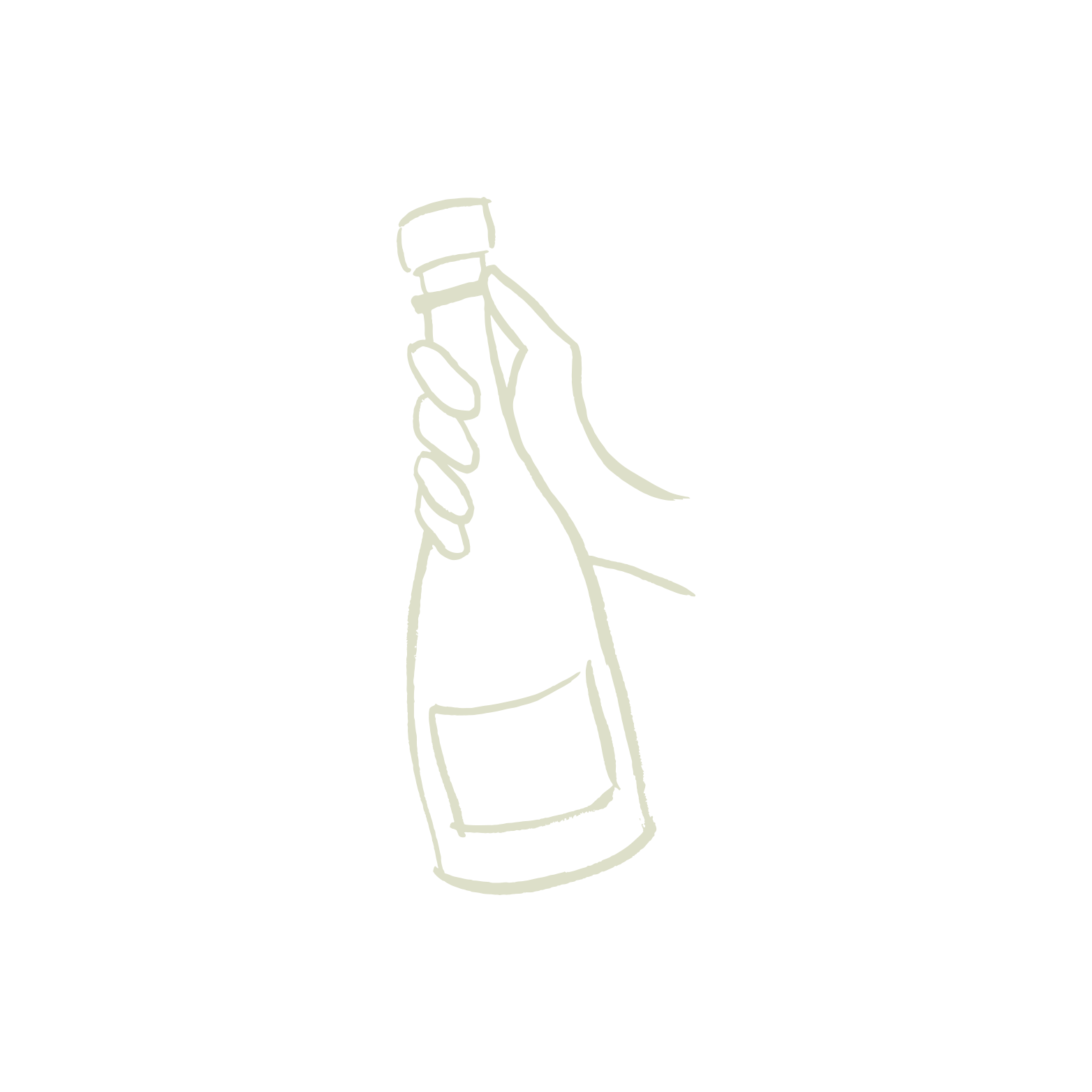What is Brut Champagne?
Your guide to understanding this unique, taste-making Champagne tradition and how fatcork has become part of the narrative.

We don’t have to look very far for examples of how a little extra effort can take something from excellent to out of this world. But centuries before Simone Biles was spending hours in the gym to hone her natural athletic talent or ice cream parlors across America were topping their generous scoops with hot fudge and a candied cherry, vignerons in Champagne were adding dosage to the world’s best bubbles.
Dosage is a measured amount of “liqueur d'expédition,” a mixture of still wine and sugar that a winemaker adds to a bottle of Champagne as a final touch — after disgorgement just before it is corked and caged. Traditionally, the amount has ranged from more than 50 grams per liter for Champagne “doux” (sweet) to less than 12 grams per liter for Champagne “brut” (dry). But in recent years, more grower-producers have been leaving dosage out altogether, resulting in Champagne with a sugar content of less than 3 grams per liter or Champagne “brut nature.”
Making a brut nature requires exceptional grapes and meticulous skill and finesse on the part of the vigneron. And when it’s done right, fatcork is a fervent champion of this less-is-more style of Champagne.

Dosage throughout history
Located in the Northeast corner of France, the Champagne region sits at the northernmost limit of France’s wine region with average annual temperatures that hover around 50 degrees F. Champagne features a unique dual climate with steady temperatures and a complex weather system influenced by both oceanic and continental systems. As a result, the Champagne grape is a distinctly beautiful fruit, but it is also highly acidic.
In the 19th century, as the popularity of Champagne grew, vignerons began adding dosage to balance the flavors of the wine, correcting for overly intense acid and imparting the desired level of sweetness to satisfy the trends of the day. In this growing industry, all Champagne was relatively sweet, and the three major markets of Russia, the United States and the United Kingdom each had their preference. Champagne vignerons added dosage to their wine according to “goût Russe,” “goût Américain” and “goût Anglais.” The British, who were prolific consumers of Champagne, began demanding a product that was more dry. As one legend tells it, frustrated winemakers in Champagne began referring to these customers as the “bruts,” meaning those who are “raw, crude and severe.” And that’s how the term “brut” became the way to describe dry Champagne.
A new way to dosage
Today, we view drier styles in a more positive light, and most Champagne enthusiasts — at least here in the U.S. — actually prefer wines on the brut spectrum. There are several reasons for this change of heart.
Since the 1800s, winemakers in Champagne have perfected the craft of making balanced wines without relying on added sugar. For grower-producers especially, good, dry Champagne begins with meticulous care of the land using organic and biodynamic practices to ensure the highest quality fruit. It also requires incredible skill and finesse during the growing stage to coax out the grapes’ natural sugars in Champagne’s cool climate. Growers must meticulously monitor the grapes and constantly assess and reassess what they need in order to thrive. Their success requires a practiced intuition and mindfulness unique to their profession.
Secondly, while climate change has increased the intensity and frequency of extreme weather that can be devastating to the vineyards in any given year, progressively warmer temperatures throughout the Champagne region have, in the last several decades, resulted in fruit that is naturally more balanced. Vignerons now use dosage more like a seasoning — the way a chef might use salt, pepper or a squeeze of lemon to finish off a dish — rather than the main ingredient.
Finally, as new generations of grower-producers take over their long-held ancestral domaines, they’re experimenting with fresh, dry styles as a way to honor the vignerons who came before them while also embracing trends and making their mark on the family business. Representing grapes in their most natural state, drier and non-dosed styles of wine show off the unique terroir of their legacy vineyards and prove their skill at producing the world’s best Champagne.
Fatcork makes the case for dry Champagne
When fatcork first began visiting Champagne more than a decade ago, many of the growers we met believed Champagne drinkers in the U.S. preferred their Champagne with a higher dosage. They told us their extra brut and brut natures were too austere, too obscure — fit for fine dining restaurants and wine industry events, not backyard barbecues or game nights with friends.
We knew we were onto something extraordinary when the grower-producers we met seemed interested to hear that our experience was altogether different — that, like us, our customers back in the U.S. wanted to drink dry, authentic bubbles that were full of terroir and unlike anything else.
Over the years, we nurtured our relationships with these grower-producers, earning their trust while at the same time always making our case for bringing drier styles of Champagne to our fatcork customers stateside. Today, we’ve built an exciting Champagne portfolio that includes dry styles from brut to brut nature. And in some cases, we’ve been intimately involved in the process of crafting these very dry cuvées alongside our grower-producers in France.

One of our all-time favorite growers that we’ve worked with is A. Levasseur’s David Levasseur, a second-generation winemaker whose playful spirit and enthusiasm results in fresh cuvées that are fun to drink. The A. Levasseur estate is located in Cuchery in Vallée de la Marne, a subregion revered for its exceptional pinot meunier. Most A. Levasseur cuvées highlight this late-budding, early-ripening Champagne grape. In 2022, fatcork approached David about making an extra brut version of both his flagship cuvée Rue de Sorbier and his Extrait Gourmand Rosé for our customers back in the U.S. And, to our delight, he agreed! Now, after a nearly two-year wait, these super special, dry-but-balanced fatcork exclusives are ready to drink. And our members are the first in the world to try them. Members will find these expressive, low-dosage Champagnes in their Fall 2024 allocation.
Cheers!

